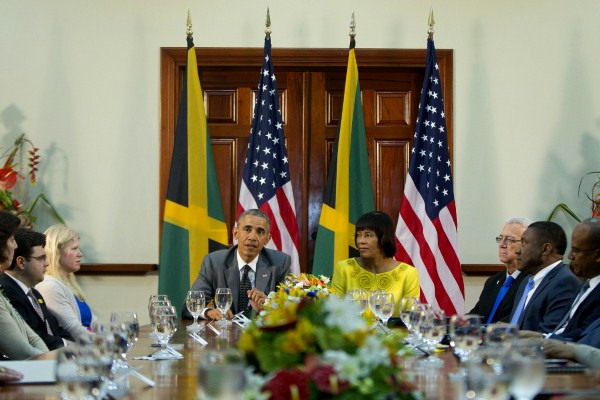U.S. President Barack Obama’s announcement of $20 million in financing for private investment in Caribbean clean energy projects at a meeting yesterday with the region’s leaders in Kingston, Jamaica, comes at a good time: After a lost decade, during which easy access to cheap Venezuelan oil undermined incentives to seek alternative sources, the Caribbean now faces long-deferred decisions on how it sources and uses energy. The slump in global oil prices has hit Venezuela’s economy hard, threatening its Petrocaribe trade program, established by the late Venezuelan President Hugo Chavez in 2005 to sell subsidized oil and diesel to the group’s 18 members, 12 of which are in the Caribbean. But with Venezuelan largesse likely to dry up, the Caribbean is looking to new energy partners and resources, including its own renewable ones. That has revived the optimism of the early 2000s, when policymakers were abuzz over renewable energy’s potential as a long-term solution to the needs of the region’s small, mostly energy-poor island states.
As U.S. Vice President Joe Biden told the Caribbean Energy Summit in January, “the best time to fix a roof is when the sun is shining.” With the cost of wind and solar energy dropping by half in the past few years, the Caribbean has an opportunity to consider a transition to more sustainable, renewable energy, as well as to more secure sources for traditional fossil fuels. New technologies and previously untapped resources, most of all shale gas unlocked through fracking, have allowed Canada, the U.S. and Mexico to create a new axis of energy cooperation, which also includes a growing renewable sector. This North American network offers a new opening for the Caribbean after a decade of dependence on Caracas’ oil lifeline.
It also offers the region a chance to make up for an earlier, missed opportunity. At the turn of the 21st century, governments like the United States, along with private investors and multilateral financial institutions, all saw in the Caribbean a green energy future built on the natural potential of sun, wind and water power. The incentives for developing these alternative sources were clear: With the exception of Trinidad and Tobago, which is rich in oil and natural gas, no Caribbean island was self-sufficient in fossil fuels. Oil accounted for 90 percent of the region’s total energy consumption. And the high price of oil, rising to over $100 per barrel after 2005, was overwhelming cash-poor Caribbean states that relied on oil and diesel fuel to run electricity networks and power transportation sectors.

